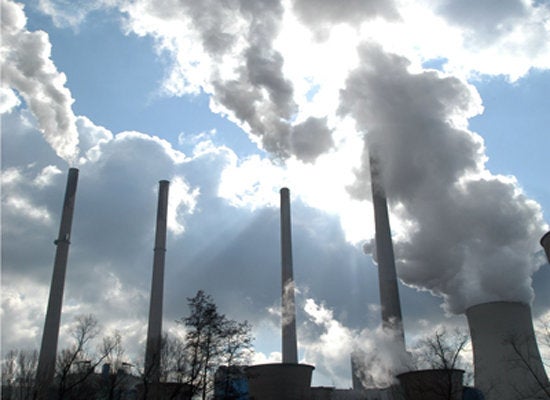
San Francisco -- As Congress considers clean-energy and climate legislation, most of the fuss has been about whether (and how) to use price signals to encourage clean energy and reduce our dependence on dirty fossil fuels. Should we have a cap-and-auction system (as President Obama prefers), a carbon tax (as many economists have argued), or cap and trade (as the House recently voted)? Or, should we just pretend that energy markets work just fine without price signals, as the Republican leadership and the Chamber of Commerce seem to prefer? Markets where you don't have to pay for what you use (in this case, the planet's limited carbon sinks) used to be associated with communism. Now they're the heart of a weird cult that calls itself conservatism.
But the argument has begun to shift a bit. Now the question is, if we have a market price on dumping carbon pollution into the atmosphere, does that mean we don't need any other reforms of our energy sector in order to create a clean-energy future, cut our dependence on imported oil, and stabilize the climate? That's not the approach taken by the recently passed Waxman-Markey bill (H.R. 2454). It includes a robust, if partial, suite of investment and regulatory features. But some macro-economists (and some figures in Congress) clearly see a price signal as a substitute for comprehensive energy market reform. Harvard's Robert Stavins recently wrote "the other titles of the bill include a host of conventional standards, many of which (under the cap and trade umbrella) will have minimal or no environmental benefits, but will limit flexibility and thereby have the unintended consequence of driving up compliance costs."
This belief that a price signal on fuel purchases alone will fix our energy sector is simply unfounded. Creating a clean-energy economy requires three key reforms. First, we need public investment to develop low-cost, low-carbon energy technologies faster than private R&D can get there -- just as we needed public investment to get the infrastructure for the information revolution in place. Second, we need to reform energy markets so that incentives are aligned and market failures fixed -- if banks won't take the energy efficiency of a new house into account when approving a mortgage, then builders simply can't put the most cost-effective furnaces, windows, and lights into the home -- because they can't recover their investment. And third, we need price signals -- not just on fuel costs, as a carbon tax would do but also on purchases of new vehicles and other energy equipment. That's because the price volatility of oil mean we can't always count on consumers to buy a fuel-efficient car to save on gasoline -- they need an incentive on the sticker at the dealer's lot.
These three strategies are at the heart of the Sierra Club's Climate Recovery Partnership. But you don't have to take the Sierra Club's word for this commonsense proposition that there is no single solution to our utterly broken, backward, and polluting energy economy. Last week the Business Roundtable issued a report documenting that the combination of price signals with technology development and regulatory reform would reduce our emissions of carbon dioxide twice as fast at half the price. So technology + policy reform + price equals a package that is four times as effective as price alone.
(The Round Table's report also emphasizes its desire for huge new investments in nuclear energy and a greater emphasis on domestic oil production through opening up public lands and waters. Because H.R. 2454 doesn't, in its view, do enough for these pathways, the Round Table declined to embrace H.R. 2454, but commended the House for moving it forward -- putting it in the same camp as the Sierra Club, albeit for very different reasons.)
A concrete example of how policy, innovation, and price work together showed up on this morning's New York Times business section. Once the federal government set efficiency standards for lightbulbs, researchers began a race not only to find substitute for the conventional incandescent bulb but also to modernize the conventional bulb to make it efficient so it could meet the new standards. According to Chris Calwell, a researcher with Ecos Consulting who studies the bulb market, "There have been more incandescent innovations in the last three years than in the last two decades." Think about that -- a simple government regulation increases the pace of innovation 700 percent!
Whether you think, with the Business Round Table, that combining price with other reforms improves performance fourfold, or take the lightbulb example as a better predictor because it's a real world example, in which case we will make progress seven times as fast, it's absolutely critical that we understand that we need a strategic combination of technology, policy, and pricing to solve our energy dilemma and start curbing the climate crisis.